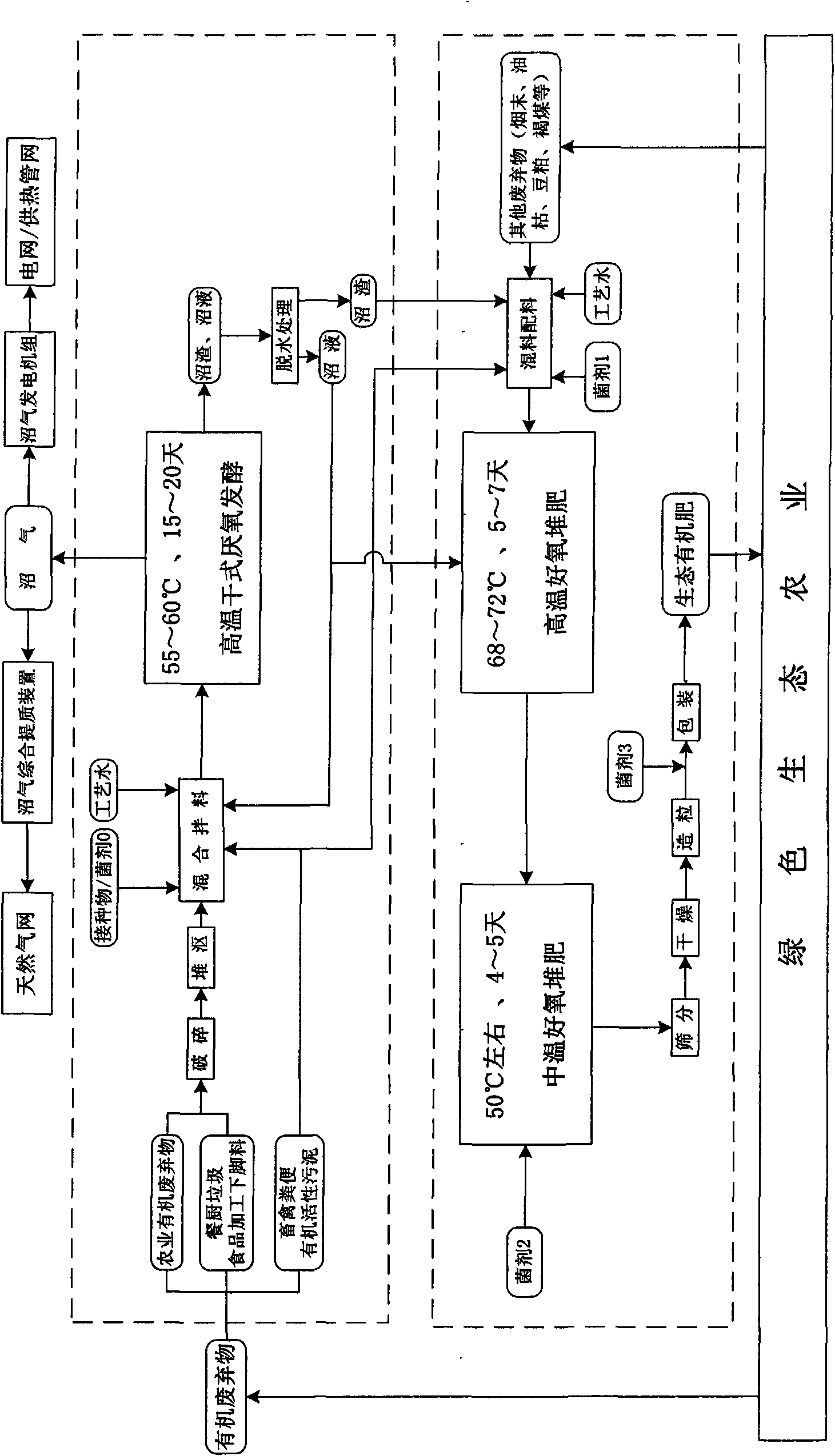Comprehensive processing technology of organic wastes
A technology for organic waste and comprehensive treatment, applied in the treatment of biological organic parts, organic fertilizers, waste fuels, etc., can solve the problems of waste, inappropriateness, and blocked fertilizer sales, and achieve comprehensive benefits, nutrient diversification, and fertilizer efficiency. Effect
- Summary
- Abstract
- Description
- Claims
- Application Information
AI Technical Summary
Problems solved by technology
Method used
Image
Examples
Embodiment 1
[0032] As shown in the figure, the process of the present invention includes processes such as material preparation, pretreatment, mixing, anaerobic fermentation, biogas utilization, and biogas residue making fertilizer.
[0033] After the organic waste is collected, it is placed in different storage tanks according to the different characteristics of the incoming materials; then the solid organic waste is crushed to a particle size of ≤30mm. It is transported to the mixing tank and mixed with process water and anaerobic digested sludge from the sewage treatment plant to produce a mixed material with a TS concentration of 35% and a temperature of 30°C to 40°C.
[0034] The pretreated material is fed into the forced feeding device by means of a feeder or pump, and the inoculum is added to the fermentation device at the same time. The process unit is a continuous processing unit, which feeds the pretreated material into the fermentation device regularly and quantitatively, and a...
Embodiment 2
[0044] After the organic waste is collected, it is placed in different storage tanks according to the different characteristics of the incoming materials; then the solid organic waste is crushed to a particle size of ≤30mm. It is transported to the mixing tank and mixed with process water, anaerobic digested sludge from sewage treatment plant and recycled biogas residue to produce a mixed material with a TS concentration of 32% and a temperature of 30°C to 40°C.
[0045] The pretreated material is fed into the forced feeding device by means of a feeder or pump, and the inoculum is added to the fermentation device at the same time. The process unit is a continuous processing unit, which feeds the pretreated material into the fermentation device regularly and quantitatively, and all these processes are controlled by an automatic operating system.
[0046] The high-temperature dry anaerobic fermentation process of organic waste is carried out in an anaerobic fermentation device, ...
Embodiment 3
[0050] After the organic waste is collected, it is placed in different storage pools according to the different characteristics of the incoming materials; then the solid organic waste is crushed to a particle size of ≤30mm. After 4 days of stacking and retting, the different incoming materials are transported to It is transported to the mixing tank and mixed with process water, septic tank bottom sludge, sewer bottom sludge and recycled biogas residue to produce a mixed material with a TS concentration of 30% and a temperature of 30°C to 40°C.
[0051] The pretreated material is fed into the forced feeding device by means of a feeder or pump, and the inoculum is added to the fermentation device at the same time. The process unit is a continuous processing unit, which feeds the pretreated material into the fermentation device regularly and quantitatively, and all these processes are controlled by an automatic operating system.
[0052] The high-temperature dry anaerobic ferment...
PUM
 Login to View More
Login to View More Abstract
Description
Claims
Application Information
 Login to View More
Login to View More - R&D
- Intellectual Property
- Life Sciences
- Materials
- Tech Scout
- Unparalleled Data Quality
- Higher Quality Content
- 60% Fewer Hallucinations
Browse by: Latest US Patents, China's latest patents, Technical Efficacy Thesaurus, Application Domain, Technology Topic, Popular Technical Reports.
© 2025 PatSnap. All rights reserved.Legal|Privacy policy|Modern Slavery Act Transparency Statement|Sitemap|About US| Contact US: help@patsnap.com

